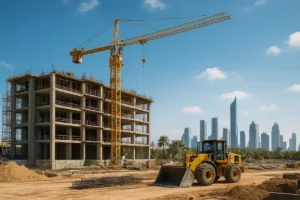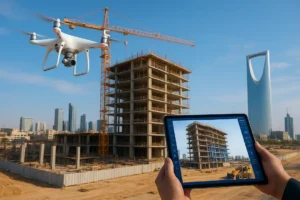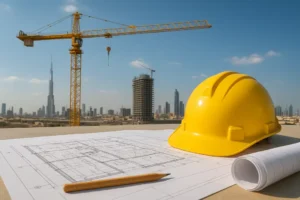How Local Stone and Finishes Define Saudi Architectural Identity
When it comes to construction in Saudi Arabia, one of the most compelling aspects is how local stone and finishes define the country’s architectural identity. From ancient villages to contemporary urban developments, the use of stone and surface treatments plays a major role in anchoring buildings to their environment, culture and heritage. In this article, we will look at how the materials, finishes and local craftsmanship in Saudi Arabia’s construction sector contribute to a distinctive architectural language. We will explain what kinds of stone and finishes are used, how they reflect regional traditions and climate, review real-world examples of construction in Saudi Arabia, and discuss advantages, limitations and future trends.
What Do We Mean by Local Stone and Finishes in Construction in Saudi Arabia?
In the context of construction in Saudi Arabia, “local stone” refers to naturally occurring rock materials sourced within the Kingdom — for example limestone from the Hijaz region (often called “Manqabi” stone) or mountain stones from the Sarawat range.
Similarly “finishes” refers to the surface treatments, claddings, plasters, façades and decorative details applied to buildings. In Saudi Arabia construction, these finishes may be natural stone cladding, mud plastering over stone, or special decorative applications that reflect heritage craft. For example, in the Al‑Baha Region local artisans build with various types of stone and finish with white quartz stones and decorative carvings.
By combining these, the architecture of Saudi Arabia creates an identity: buildings that respond to local climate, culture, materials and construction methods.
Why Local Stone and Finishes Matter in Saudi Construction
Adaptation to Climate
Construction in Saudi Arabia faces harsh climatic challenges: high daytime temperatures, large day–night temperature swings, and in some regions humidity or desert conditions. According to a specialist article, locally quarried stone in Saudi Arabia offers significant benefits because of its thermal mass — it absorbs heat slowly and releases it slowly, helping moderate indoor conditions.
Heritage, Craft and Identity
Using stone and finishes tied to local tradition helps buildings reflect regional heritage. In many mountainous / rural regions of Saudi Arabia, stone-built villages demonstrate centuries of craftsmanship. For example, stone construction was historically common in coastal and mountainous areas of Saudi Arabia.
Sustainability and Local Economy
Choosing materials locally reduces transport energy, supports regional craft and economy, and connects to a sustainability narrative. As one source states: “locally grown or produced materials … require less energy to transport.”
Aesthetic & Cultural Resonance
The look and feel of stone and finishes contribute to the visual character of Saudi construction. For example, in the Hijaz region the “Manqabi” limestone has a warm golden yellow texture that gives a heritage appearance.
Key Types of Stone and Finishes in Saudi Arabian Construction
Manqabi Limestone (Hijaz Region)
This stone is described as warm golden yellow to pink or brown, rough textured, abundant in the Hijaz region and featured in many heritage and modern façades. It serves both structural and decorative functions.
Traditional Stone Houses: Coastal & Mountain Regions
In Saudi Arabia construction, stone houses are common in mountainous regions (Sarawat range) and coastal zones (e.g., Jeddah’s coral-stone houses). According to Saudipedia: “Stone construction was historically common … in coastal areas … or mountainous areas along the Sarawat Mountain range.”
Finishes & Decorative Treatments
In the Al-Baha region, local builders use several types of stone (cornerstones, long stones, supporting Al-Mateen or Al-Dahr stones) and finish walls with white quartz stones and mud plaster.
Modern Stone Cladding in High-Profile Construction
Modern construction projects in Saudi Arabia also apply local stone cladding for façades and large-scale buildings. For instance, one case study describes a building clad in local stone in the desert landscape to integrate with its setting.
How Local Stone and Finishes Define Architectural Identity in Saudi Arabia
Regionally Distinct Styles
Because geological, climatic and cultural conditions differ across Saudi Arabia, the use of stone and finishes contributes to regional architecture. For example:
-
Coastal region: coral stone or limestone façades with wood balconies in old Jeddah.
-
Mountainous region: multi-storey stone buildings in old villages of Asir/Al-Baha built by local artisans.
These regional materials and finishes help anchor the construction in Saudi Arabia to place and heritage.
Visual Continuity with Landscape
Stone and finishes allow buildings to visually integrate with the desert, mountains or coastal environment. A modern example describes local stone cladding “reinforc[ing] the idea that the building is part of the desert landscape.”
Craftsmanship & Cultural Narrative
By using finishes such as carved stone, white quartz decorative elements, mud plastering etc, Saudi Arabia’s construction sector retains ties to craftsmanship and cultural narrative. For example local artisans in Al-Baha still practise stone building craft adapted for contemporary use.
Modern Construction Meets Heritage
Construction in Saudi Arabia increasingly blends modern design and large-scale developments with heritage materials and finishes. The stone and finish choices help maintain a sense of identity even in new projects.
Conclusion
In summary, local stone and finishes play a central role in the construction sector of Saudi Arabia by defining architectural identity, grounding buildings in place, culture and climate. From Manqabi limestone façades to traditional stone houses in Al-Baha and Asir regions, the use of stone and finishes carries heritage, practicality and aesthetic power. While there are challenges in labour, cost and maintenance, the benefits in durability, sustainability and identity are clear. As Saudi Arabia advances its construction industry, embracing local stone and finishes offers a pathway to architecture that is both modern and rooted. If you’re involved in construction in Saudi Arabia, paying attention to stone and finishes is key to creating meaningful, lasting architecture.



